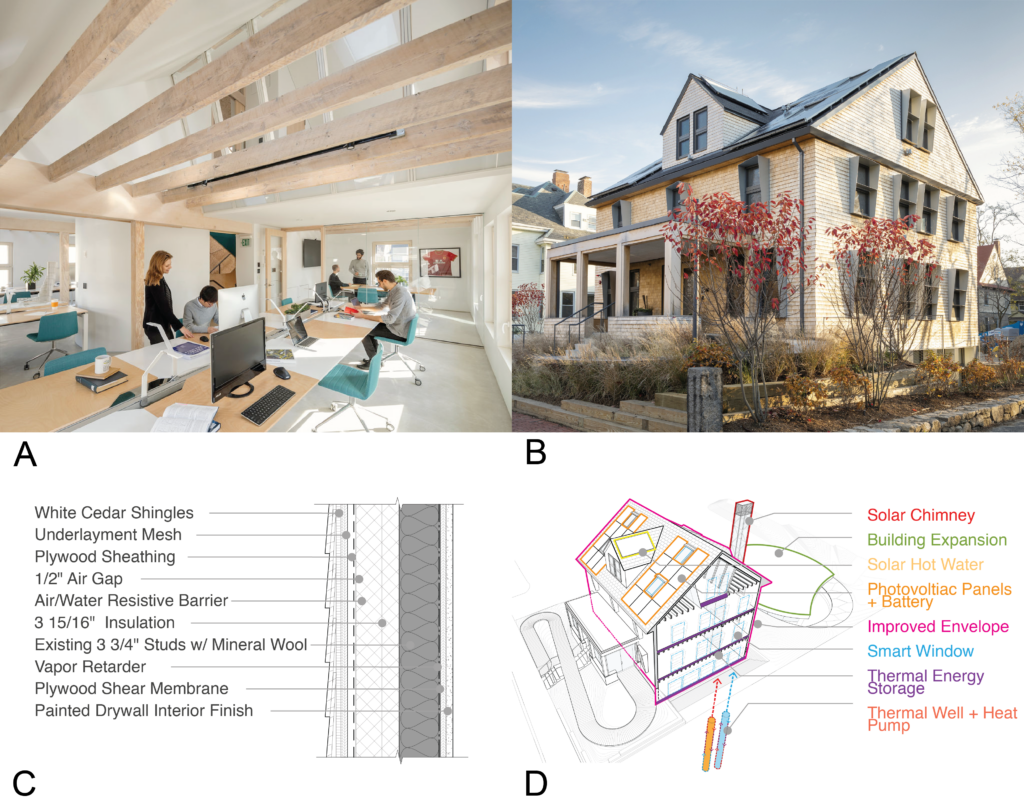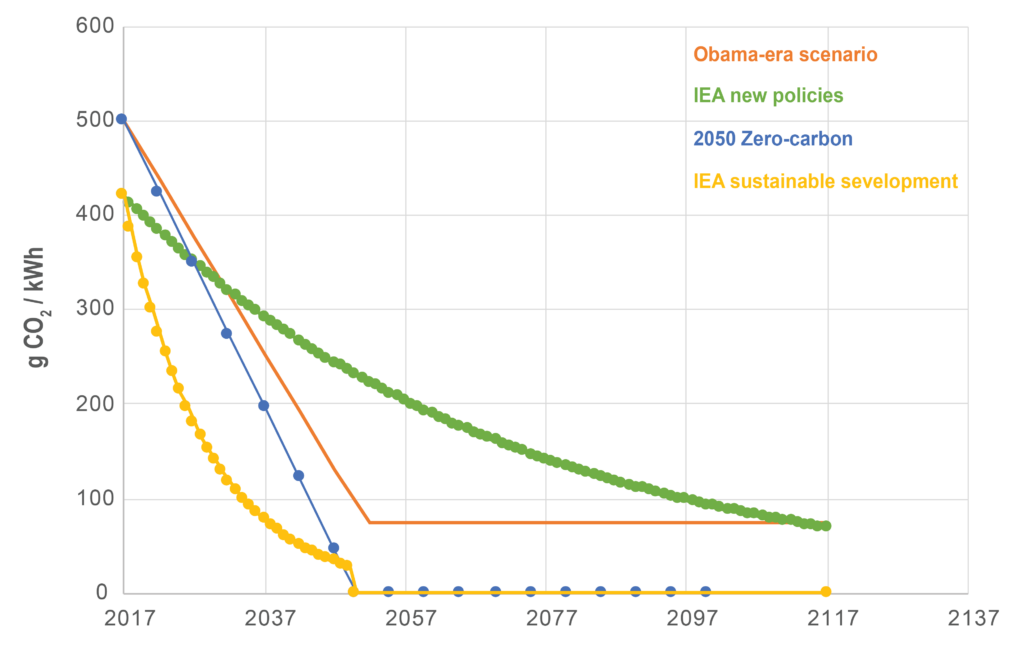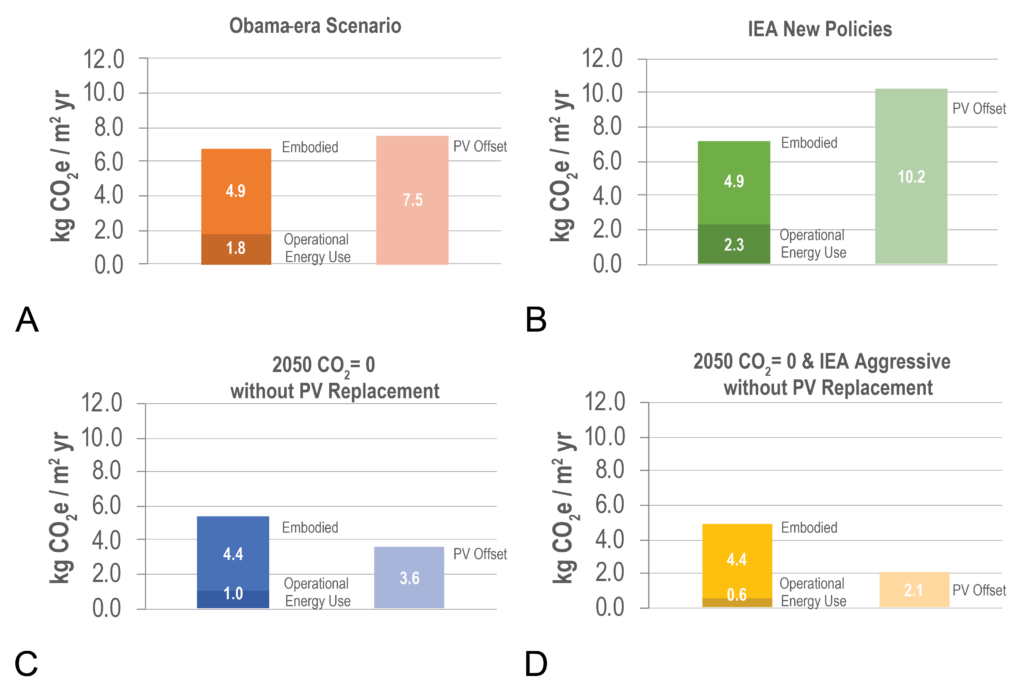Grinham Research Group
Harvard University Graduate School of Design
HouseZero
Life Cycle Carbon Emissions
Project Overview
The research paper “Zero-carbon Balance: The Case of HouseZero” provides readers with a case study of the data, methods, and scenarios used to calculate HouseZero’s carbon balance over a 100-year estimated building life (the carbon balance for a 60-year estimated building life is also calculated in the full paper). To do this, the team calculated the total embodied carbon emissions from as-built data, simulated operational carbon emissions, and projected carbon offsetting from onsite renewable energy over the entire life of the building. To make the findings comparable to other studies, the paper reports the embodied carbon emissions per square meter of occupied space, which results in 488 kg CO2e/m2 for the 100-year estimated building life.
This calculation includes carbon emissions generated from the extraction, manufacturing, construction, and replacement of all elements considered to be within the building’s physical system boundary. This incorporates the building’s material systems (e.g., building assemblies including the foundation, structure, enclosure, and interior partitions and finishes) as well as technical systems that are not as typical in most studies (e.g., energy well, heat pump, photovoltaic panel and balance-of-system, and elevator). When temporal and physical system boundaries are aligned to current benchmarking studies, the normalized embodied CO2e emissions of HouseZero are much lower – less than half – at 233 kg CO2e/ m2.

Findings
Project Team
Jonathan Grinham
Henning Fjeldheim
Bin Yan
Tor Dokka Helge
Kristian Edwards
Tine Hegli
Ali Malkawi
The team found that achieving zero carbon balance is dependent on how much carbon is emitted by the current and future energy supply from the electrical grid. The carbon balance results showed that HouseZero can achieve net-zero carbon balance with its simulated energy consumption and onsite power generation under current energy grid carbon-intensity scenarios when a zero-carbon emission grid is not achieved by 2050. However, if zero-carbon grid emissions are achieved by 2050, the project cannot achieve a net-zero carbon balance. These results highlight the sensitivity of the carbon balance analysis when designing a zero-carbon emissions building, the need for transparent CO2e accounting, more uniform systems boundary definitions, and the importance of data related to the future building and energy grid scenarios prescribed in the LCA study.


